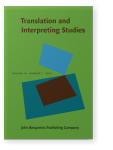Vol. 16:1 (2021) ► pp.124–148
Translating Qur’anic ‘X-phemisms’ Muslims live by
A pragmasemantic reading
This study employs a pragmasemantic approach to investigate the challenges Qur’an translators encounter when rendering Qur’anic euphemisms of licit intercourse (X-phemisms) into English. To achieve the objectives of the study, two understudied translations have been selected for a contrastive analysis of source language X-phemisms and their target language renderings. The analysis reveals that Qur’anic X-phemisms do not lend themselves to an easy translation due to cultural and linguistic idiosyncrasies; they hold a variety of lexical-semantic relations, and branch out into three broad ramifications: procreation, protection, and pleasure. Several Qur’anic X-phemisms have undergone semantic change through meaning-related processes, including generalization, particularization, amelioration, pejoration, and opposition. Some linguistic mechanisms have been manipulated to create euphemistic substitutes for direct references to marital sex through periphrasis, collocation, and figuration, all of which flout the Cooperative Principle in favor of the Politeness Principle.
Article outline
- Introduction
- Theoretical preliminaries
- Method
- Sample analysis
- Metonyms and particularizations
- Metaphor and implication
- Overstatement
- Understatement
- Discussion
- Conclusion
- Acknowledgements
- Notes
-
References
